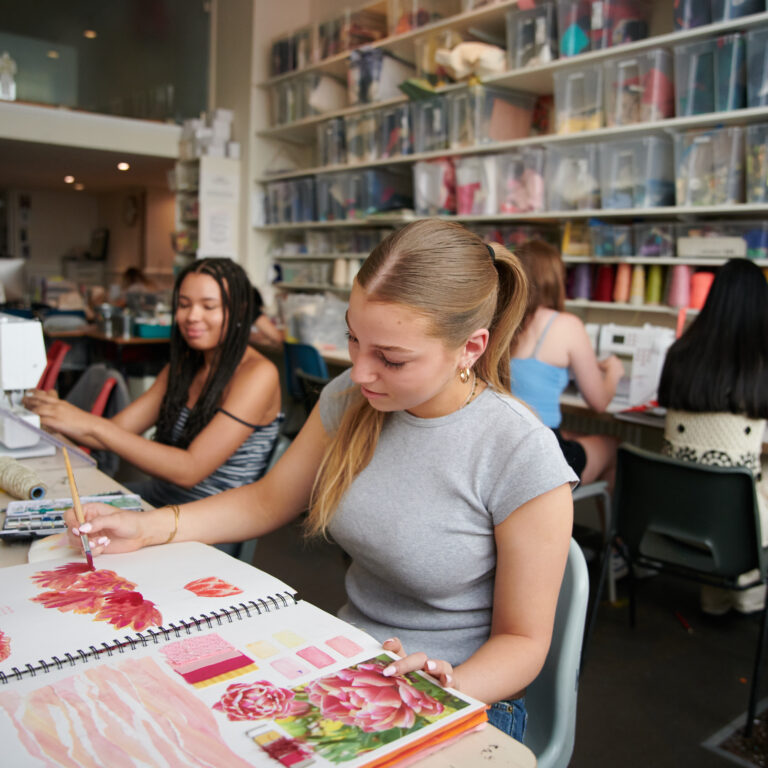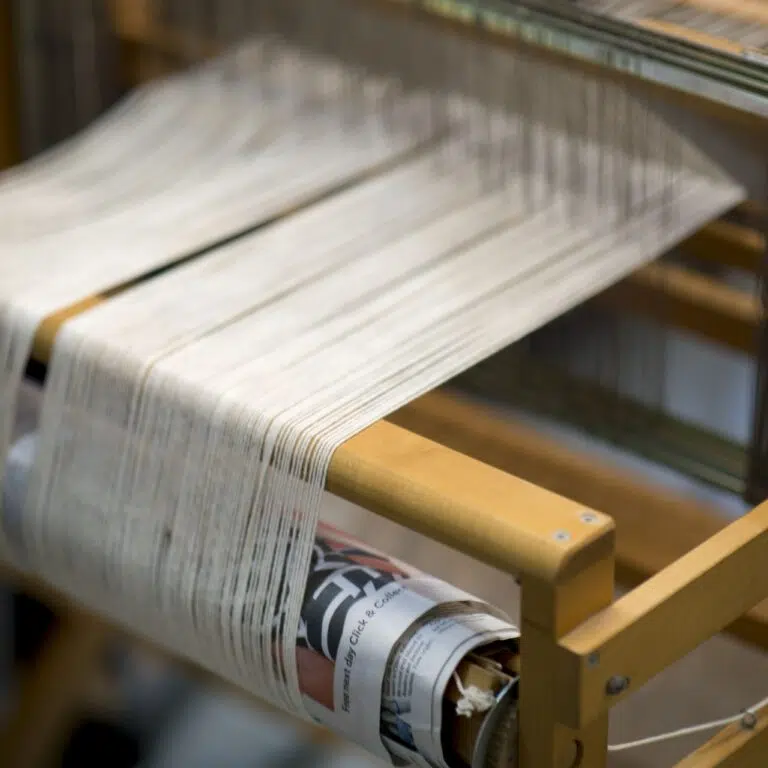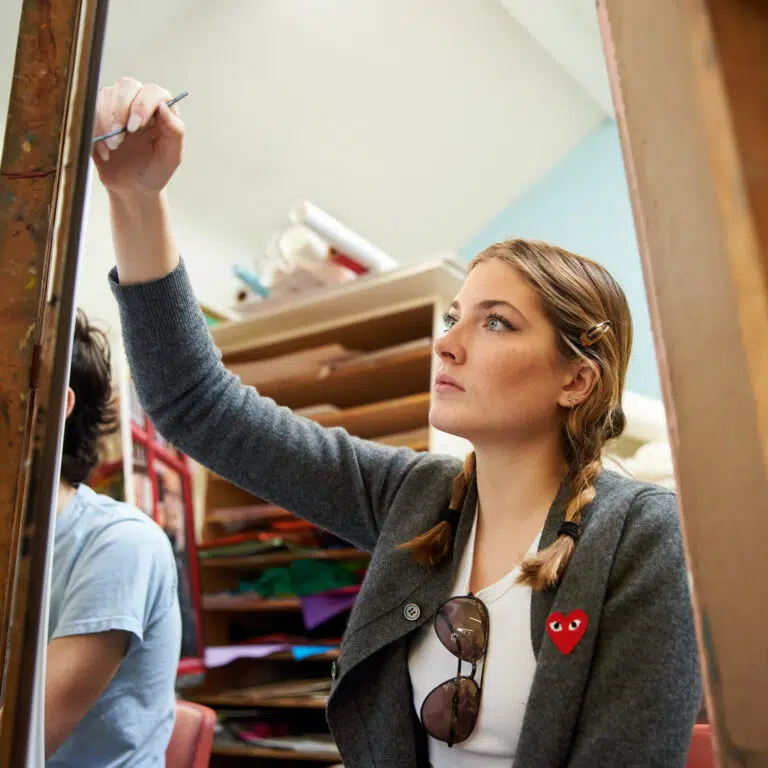Fashion/Textile Design is a 2-year fine art-based course, aimed at developing skills, techniques and creativity in fashion and textiles. The aim of the course is to develop an ambitious and creative portfolio of work underpinned by solid skills, techniques and a contextual knowledge of the wider fashion/textile arena. A thoughtful and creative approach to ideas is encouraged and students learn strong technical skills and a wide vocabulary of visual language.
The course will start with an introduction to Fashion/Textile Design, where students will develop understanding and skills through a creative approach to research and practical work. Using sketchbooks for recording, students will develop a range of drawing and mark-making techniques and will be encouraged to reflect on their own design work and the work of others.
Skills will then be developed through small workshops, exploring the creation and development of fashion design ideas, fashion illustration, fine art textile design, and textile techniques such as embroidery, manipulation of fabric and fibre, dyeing, printing and weaving. These skills will be used to produce original, individual final outcomes such as garments, accessories and interior design items.
Fashion/Textile Design can be taken further, with students progressing to BA courses in Fashion Design, Textile Design, Interior Design, Fashion Styling and Marketing or Costume Design.
Students also progress to various Foundation Art and Design courses, sometimes specialising in a Fashion/Textiles pathway.
The Textile Design A level is divided into 2 components:
Lower Sixth
| Component 1 | Part 1 (60% of the final mark) |
Personal investigation, which includes supporting studies, practical work and a personal study. The first term covers a fashion project, through which the basics and foundation skills are covered and developed. In the second half of the Lower Sixth year the students will consolidate the learned skills developing a personal project: Sense of Place (Internally set and externally moderated).
Upper Sixth
| Component 1 | Part 1 continues: The Upper Sixth theme is ‘Cities and Communities’ |
| Component 1 | Part 2 |
Personal Study. This will be evidenced through a piece of critical writing of a minimum of 1,000 words, and supports the student’s textile body of work (Internally set and externally moderated).
| Component 2 | (40% of final mark) |
Externally set examination assignment with research and development of personal ideas around a set theme. Assessment is through sketchbook work, practical supporting studies and 15 hours of examination time. (Externally set and externally moderated.)
Most students will have a GCSE (A*-C) in Art, Graphics, Textiles or Photography. It is essential to have a passion for the subject and a determination to work hard. A personal approach is encouraged throughout the course and it is expected that students will work in their own time to independently develop their projects.
During the course students are given detailed feedback on their progress in meeting four assessment objectives:
- Developing ideas and critical understanding through contextual sources.
- Exploring a range of materials, techniques and processes.
- Recording ideas and observations and reflecting critically on progress.
- Presenting a meaningful response from your research.
The 15-hour practical examination will take place in the second year as part of the Externally Set Assignment. Both components will be marked and externally moderated at the end of the course.
Examination Board: Eduqas




